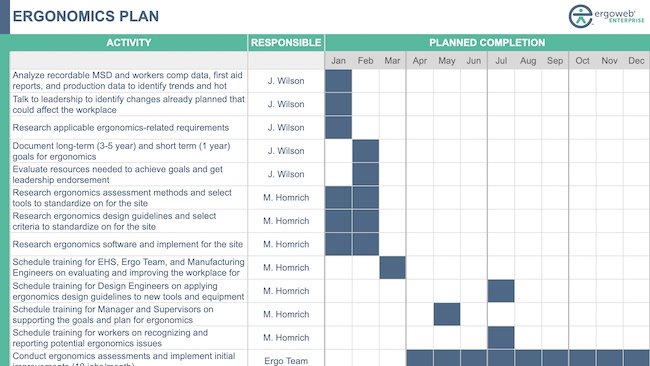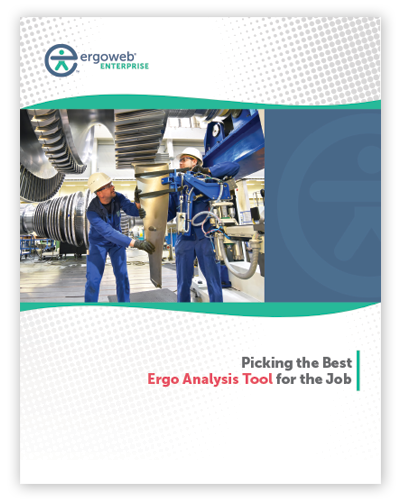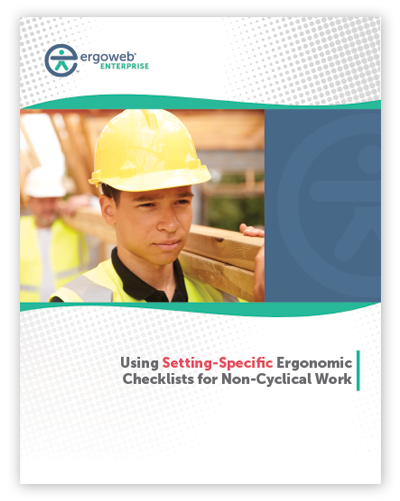Ergoweb® Learning Center
We’ve published and shared thousands of ergonomics articles and resources since 1993. Search by keyword or browse for topics of interest.
Downloadable Guides
Browse Open Access Articles
June 28, 2012
In this reprint from The Ergonomics Report archives, journalist Jennifer Anderson interviewed the late Hal W. Hendrick - the "Macroergo Pioneer" - who shared his insights and provided examples demonstrating why good ergonomics is good economics, a theme that continues to resonate today.
June 27, 2012
The advent and prevalence of mobile phones, texting, and interactive vehicle dashboards have brought concerns over driver distraction to the forefront. Peter Budnick reviews new research that attempts to investigate the relationship between eye-glance duration, location and history to driver distraction and the likelihood of a crash. The authors rely on real-world driver data collected before the prevalence of mobile devices, but they're biggest finding is that we need better real-world driving data before we can precisely understand eye-glancing as it relates to driver distraction and resulting crashes.
June 21, 2012
This research review by guest contributor Tim Villnave, reprinted from The Ergonomics Report archives, demonstrates that a company's bottom line can be optimized by appreciating the full cost of health conditions and including health enhancement interventions aimed at reducing absenteeism/presenteeism.
June 20, 2012
This is an updated version of guest contributor Janet Peterson's a concise, useful guide to keyboard trays as a means to add adjustability to a fixed height desk or work surface. She provides actionable advice on when a keyboard tray may be the right solution, what "must-have" features to look for, and which optional features will improve workstation ergonomics. She also offers considerations for corner and "U" shaped work stations, and provides wise words of caution regarding keyboard trays advertised as "sit/stand" or "sit-to-stand".
June 18, 2012
There are many potential benefits from sit-to-stand and user adjustable furniture, including lower total cost of ownership, fewer MSD's, higher productivity, improved satisfaction, etc. However, to get the greatest benefit for the employee and the company, you need to ensure that you deploy the right equipment to the right population, and then support roll-out by giving users encouragement and guidance in how to be comfortable and successful with the new equipment. This article provides background for the benefits of sit-to-stand workstations, and guidance on how to effectively implement them on a small or large scale basis.
June 7, 2012
In this article, originally published in 2009 in The Ergonomics Report, journalist Jennifer Anderson describes a campaign to persuade intensive care physicians and surgeons that the humble checklist offers an effective means of reducing medical errors and complications. The World Health Organization added its weight to the effort. Has your hospital implemented such basic, necessary and straightforward ergonomics as a means to improve patient care and outcomes?
June 7, 2012
Guest contributor Janet Peterson, PT, DPT provides a concise, useful guide to keyboard trays as a means to add adjustability to a fixed height desk or work surface. She provides actionable advice on when a keyboard tray may be the right solution, what "must-have" features to look for, and which optional features will improve workstation ergonomics. She also offers considerations for corner and "U" shaped work stations, and provides wise words of caution regarding keyboard trays advertised as "sit/stand" or "sit-to-stand".
May 31, 2012
Ease of use and patient satisfaction were just two of the factors that influenced the Institute of Ergonomics & Human Factors (IEHF) to award their 2012 Ergonomics Design Award (EDA) to the V.A.C.Via
May 31, 2012
Musculoskeletal Disorders (MSDs) are among the leading causes of morbidity among working aged adults and armed service members. The most common cause for medical evacuation in the Iraq war was an MSD, and MSDs are also quite common in basic training. Functional Movement Screening (FMS) is thought by many to offer a new paradigm for predicting MSDs. However, in this study, the first large scale to test the predictive validity of this hypothesis, the results indicate FMS is not a reliable predictor of future injury, or at least not in the military population studied. This article is republished from The Ergonomics Report.






